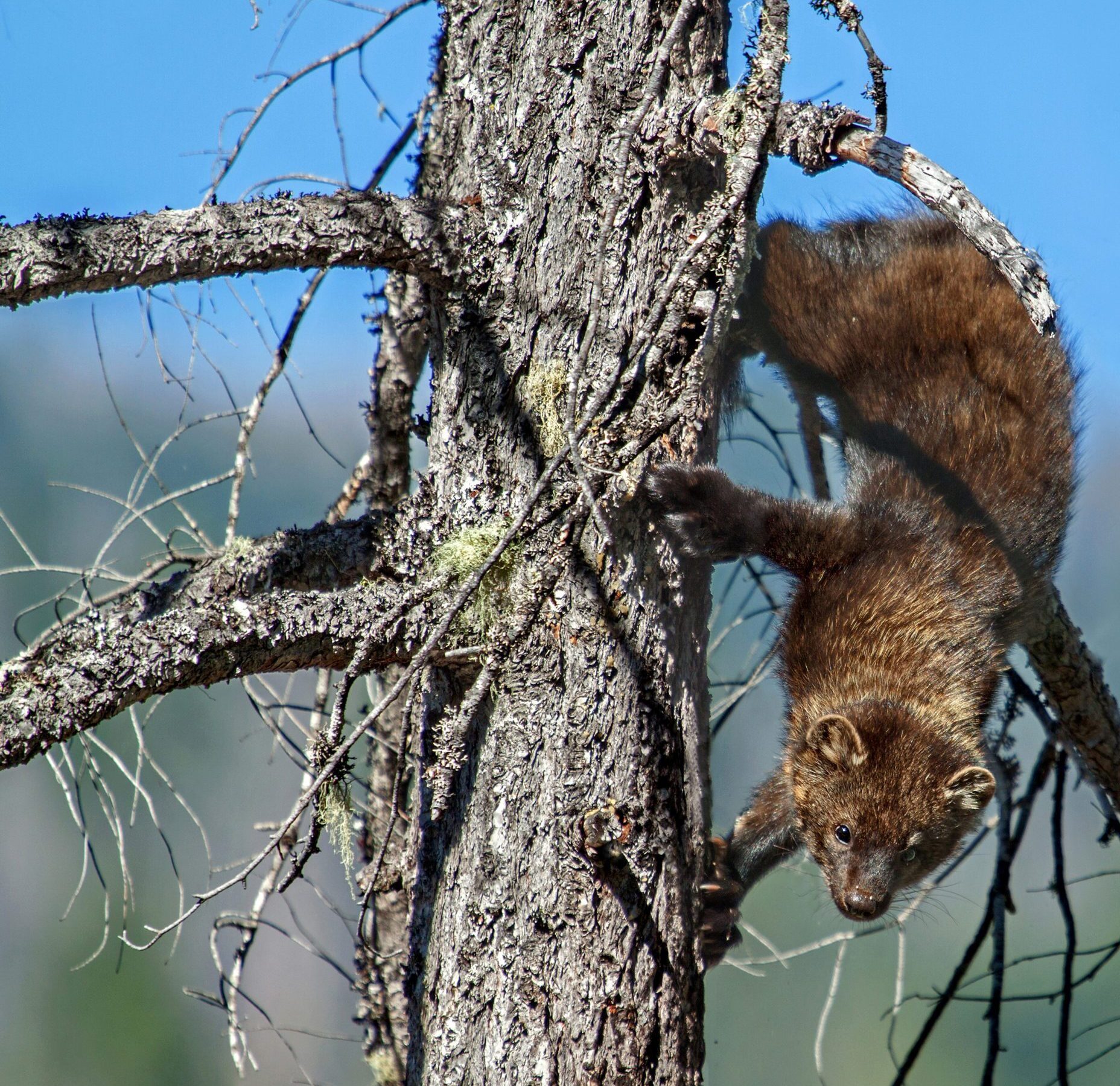| Scientific Name Pekania pennanti Size Males: 35-47 inches long; 8 – 13 lbs. Females: 30 – 37 inches long ; 4 – 6 lbs. Habitat Coniferous old-growth forests Status Only the Southern Sierra Nevada Distinct Population Segment (DPS) listed as “Endangered” federally, the rest of the population is not listed. |
About
The fisher is a member of the weasel family and is about the size of a house cat with a long slender body, short legs and a long bushy tail. Their coats are generally a deep brown color but change with the seasons, and in the summer, their fur from the face to shoulders can be almost blonde. They are generalist and opportunistic eaters that hunt porcupines, rabbits, hares, and small mammals such as squirrels and mice. They will also supplement their diet with small reptiles, insects, mushrooms, berries, and carrion from large animals. Pacific fishers are proficient hunters and are one of the only known species that can hunt porcupines. They usually remain independent, but come together during mating season by leaving scent trails.
Mating occurs in late March to early April. Females use a reproductive strategy called delayed implantation, meaning that the fertilized egg does not immediately implant in the uterus, but instead stays in a state of dormancy for ten months. In mid-February the fertilized egg is implanted in the uterine walls and active pregnancy begins. After about 50 days, females give birth in a tree cavity to one to four kits. Seven to ten days later the female is ready to mate again, and the cycle starts over once again. It is thought that female fishers choose tree cavities with openings that are too small for a male fisher to fit into, because newly-born kits are small and vulnerable during this mating period.
Why does it need our help?
While the fisher was once abundant, they are now limited to small regions in Southern Oregon, Northern California and the Southern Sierra Nevada Mountains. Their populations have dwindled due to historic fur-trapping, habitat loss, over-hunting, and recently, rodenticides used in illegal marijuana cultivation. Although successful reintroductions have occurred in Olympic National Park and Washington’s central and southern cascades, this species still has a long road to recovery. Only about 4,000 fishers remain on the west coast and about 250 in the Sierra-Nevada Range. While fishers are beginning to be protected in other eastern states, Oregon and California have yet to take legal action.
Fishers require old-growth forests with an abundance of old trees, snags, and downed logs. Fishers give birth in tree cavities (hollowed out portions of a tree), and the mother will move the kits to new cavities as they grow. Fishers often use tree cavities or large branches to rest and hide during inactive periods. Aggressive logging practices do not allow forests to mature to a state that is usable by fishers as habitat.
Did you know?
- Fishers can rotate their paws almost 180 degrees, allowing them to climb down trees headfirst
- Fishers are one of the few animals that can hunt porcupine, flipping them on their back and attacking the belly
- Fishers have a large scent gland on their feet, allowing them to leave a scent trail to communicate with other fishers
- Despite being called “fishers” they very rarely eat fish



